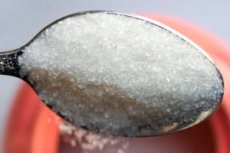The sweet taste receptor influences glucose metabolism in humans
最近審查:14.06.2024

The Monell Research Center has a rich history of sweet taste research. Monell scientists were one of four teams that discovered and characterized the mammalian sweet taste receptor, TAS1R2-TAS1R3, in 2001. Twenty years later, in 2021, a pair of papers published by Monell researchers in the journal Mammalian Genome highlighted the genetics of sugar-loving mice.
The sweet taste receptor, expressed in taste bud cells, transmits the sensation of sweetness from the mouth when activated. Earlier this month, a study conducted by fellow Monell researcher and published in PLOS One explored how the sweet taste receptor may be the first stop in the metabolic surveillance system for sugar. This receptor is also expressed in certain cells of the intestine, where it may facilitate the absorption of glucose within this system.
The team found that stimulation and inhibition of TAS1R2-TAS1R3 shows that it helps regulate glucose metabolism in humans and may have implications for managing metabolic disorders such as diabetes. Glucose is the main type of sugar in human blood, making it a key source of energy for cells.
"Our goal was to determine whether TAS1R2-TAS1R3 affects glucose metabolism in two ways," said Dr. Paul Breslin, professor of nutritional sciences at Rutgers University and senior author of the paper.
They showed that a TAS1R2-TAS1R3 agonist (sucralose, a non-calorie sweetener) or a TAS1R2-TAS1R3 antagonist (lactisol, a sodium salt that inhibits sweet taste), mixed with a glucose-containing meal, differentially altered glucose tolerance in of people. The agonist binds to the receptor and stimulates the cell, and the antagonist binds to the receptor and prevents stimulation.
"The novelty of our findings is that the receptor we studied in this experiment affects blood glucose and insulin levels differently during a glucose meal, depending on whether it is stimulated or inhibited." " Breslin said. This work provides further evidence that taste receptors help regulate metabolism and nutrient absorption.
Plasma insulin levels were measured in study participants who underwent an oral glucose tolerance test (OGTT), which monitors blood sugar levels before and after eating a liquid meal containing glucose. Participants' ratings of the sweetness of sucralose correlated with early increases in plasma glucose levels as well as increases in plasma insulin levels when sucralose was added to the OGTT. Added sucralose accelerated insulin release in response to glucose load. On the other hand, participants' sensitivity to sweetness inhibition by lactosyl correlated with a decrease in plasma glucose levels. Lactosyl also slowed down insulin release.
"When glucose stimulates taste receptors prior to absorption into the body, signals are transmitted through the mouth and intestines to regulatory organs such as the pancreas. Perhaps we could develop ways to use TAS1R2-TAS1R3 to help the body deal with glucose better, anticipating its appearance in the blood," Breslin said.
"This system is elegant in its simplicity," Breslin said. The same taste receptor is found throughout the body—in the mouth, gastrointestinal tract, pancreas, liver, and fat cells, which are the main metabolic regulators involved in the body's 24/7 metabolic monitoring.
Is there a connection between a person’s health status and the activity of its TAS1R2-TAS1R3 receptors? The study authors think so, suggesting that the degree of receptor activation has an acute effect on plasma glucose and insulin levels, which are important for metabolic health.
The team believes that current dietary habits associated with excessive consumption of foods and drinks high in sucrose, high fructose corn syrup, and high-potency sweeteners may overstimulate TAS1R2-TAS1R3, leading to improper regulation of blood glucose. This can lead to metabolic syndrome, which increases the risk of heart disease, stroke and diabetes.
"Studies like these show that the sweet taste receptor TAS1R2-TAS1R3 helps regulate glucose differently depending on the sweetness of the food or drink," Breslin said. The team hopes to apply what they've learned to improve the health of food and drink products.
“A small positive metabolic change can make a big difference in people's lives and health if it accumulates over decades and spreads to millions of people,” Breslin said.

